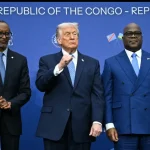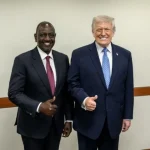n the theatre of global economic policy, Donald Trump’s proposal for a 100% tariff on foreign-made films is a dramatic plot twist. While framed as a cultural and industrial policy, its potential economic ripple effects on emerging creative economies like Kenya’s are profound and warrant a serious analytical breakdown.
The Forex and FDI Opportunity
Kenya consistently seeks to diversify its export base and attract Foreign Direct Investment (FDI). The film industry is a high-value service export. An international production company spending $10 million in Kenya is a direct injection of forex and a boost to our service sector GDP. This tariff makes Kenya a more financially attractive production hub compared to other non-US locations, potentially diverting significant FDI into our creative infrastructure.
The Tourism Multiplier Effect
The “Film-Induced Tourism” phenomenon is well-documented. Think of the surge in tourism New Zealand experienced from The Lord of the Rings. Major films shot in Kenya’s iconic landscapes serve as a multi-million dollar, multi-year global advertising campaign. This policy could inadvertently position Kenya as the premier destination for such productions, leading to long-term growth in our tourism earnings.
Job Creation and Skills Transfer
The economic benefit isn’t just in the direct production costs. A thriving international film sector creates high-value jobs and facilitates critical skills transfer. Kenyan cinematographers, sound engineers, and VFX artists would gain experience on world-class productions, increasing the value and quality of our entire local industry, Riverwood. This upskilling has a compounding effect on the economy.
Strategic Recommendations for Kenya
To capitalize on this potential windfall, policymakers must:
-
Streamline Filming Bureaucracy: Create a true “one-stop-shop” for international production permits.
-
Offer Fiscal Incentives: Introduce competitive tax rebates for film production to further enhance our attractiveness.
-
Invest in Human Capital: Partner with institutions like the Kenya Institute of Mass Communication to tailor curricula for the demands of international productions.
Conclusion: While politically contentious in the US, this proposed tariff presents a tangible economic opportunity for Kenya. It is a call to action to strategically position our creative economy as a leading source of growth, jobs, and global soft power.










